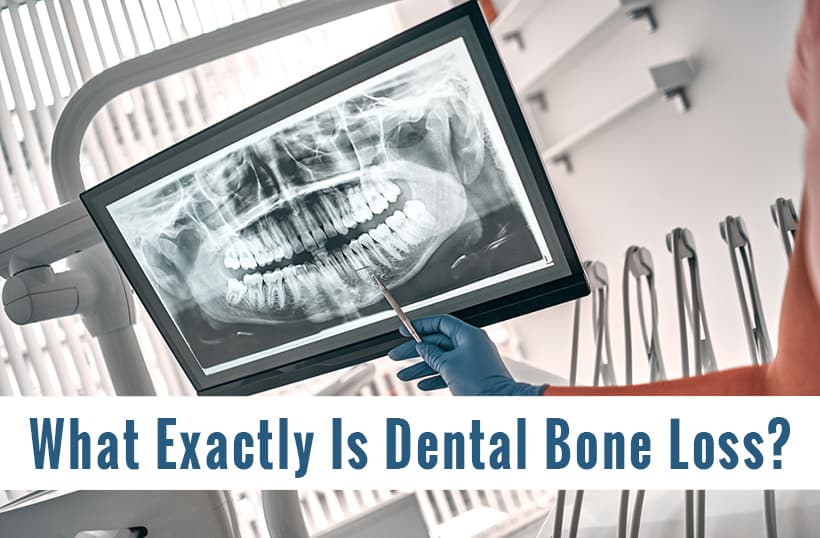
Dental bone loss refers to the loss of bone mass in the jaw. It most likely occurs because of periodontitis or tooth loss. Periodontitis is the inflammation of tissues supporting the teeth that is caused by a certain bacteria in the mouth. Over time, this bacteria can eventually lead to the loosening of the teeth. Tooth loss can also lead to dental bone loss if a tooth is not replaced.
When a tooth is removed from the jaw bone, the bone in that area is no longer being stimulated. The change in bone density happens quickly as studies show that 25% of the bone in this area is reabsorbed by the body in the first year. The bone continues to be lost over the next several years. This bone loss can be easily be seen in an x-ray and the change in bone ridges can often be seen by looking in the mouth. Continue reading to learn more about dental bone loss from Riverside Dental Care.
Can I Get Dental Implants If I Have Bone Loss?
You might or might not be able to get dental implants if you have bone loss. When it comes to getting implants each case is very unique. Your dentist will evaluate your medical history and also evaluate things like how much bone height is available at the ridge. Many dentists take advantage of a 3D cone beam CT scanner to take images of the teeth, jaw, and related structures. This image allows for the exact measurement of width and height of bone ridges so that it can be determined if bone grafting is needed.
Can Tooth Bone Loss Be Reversed?
Again, this all depends. It depends on how long it’s been since a tooth was lost and more importantly how much bone loss has actually happened. Once tooth bone loss has occurred, the bone is not going to come back on its own. Bone grafting surgery can be used to repair damaged and lost bone around teeth that have suffered from severe gum disease or from losing a tooth. A bone graft will replace lost bone, but it will also stimulate the jawbone to regrow and eventually replaces the bone graft with the patient’s own, healthy bone.
Can Dental Implants Help Prevent Dental Bone Loss?
Yes, dental implants can help to maintain bone density. Dental implants mimic a root in that they are surgically put into the jaw bone and thus when used for chewing they help to stimulate bone.
Replacing teeth with full or partial dentures that don’t include implants doesn’t solve the problem dental bone loss. This is because the dentures exert a very small amount of chewing pressure on the bone compared to natural teeth.
Is Dental Bone Loss The Same As Enamel and Dentin Loss In Teeth?
No, dental bone loss is different than enamel or dentin loss. Dental bone loss in teeth has to do with the loss of bone that was surrounding and supporting the teeth. Enamel and dentin loss has to do with the loss of tooth structure itself. Enamel and dentin loss is not something that can be reversed or regenerated while bone loss is something that can be regenerated through bone grafting.
When it comes to dentistry, prevention is always best. Rebuilding bone loss in gums is always a more involved process than keeping bone levels healthy in the first place. While we would love for everyone to keep their full natural set of teeth along with healthy bone levels, we also realize that it isn’t always possible. We are thankful for the restorative and implant services that we can offer our patients so that they don’t have to suffer the long term effects of dental bone loss. To schedule your next appointment or to be evaluated by our dentists, please call us or schedule an appointment online.






 (435) 656-4441
(435) 656-4441 826 S 3000 E Ste 2
826 S 3000 E Ste 2
Leave a Reply